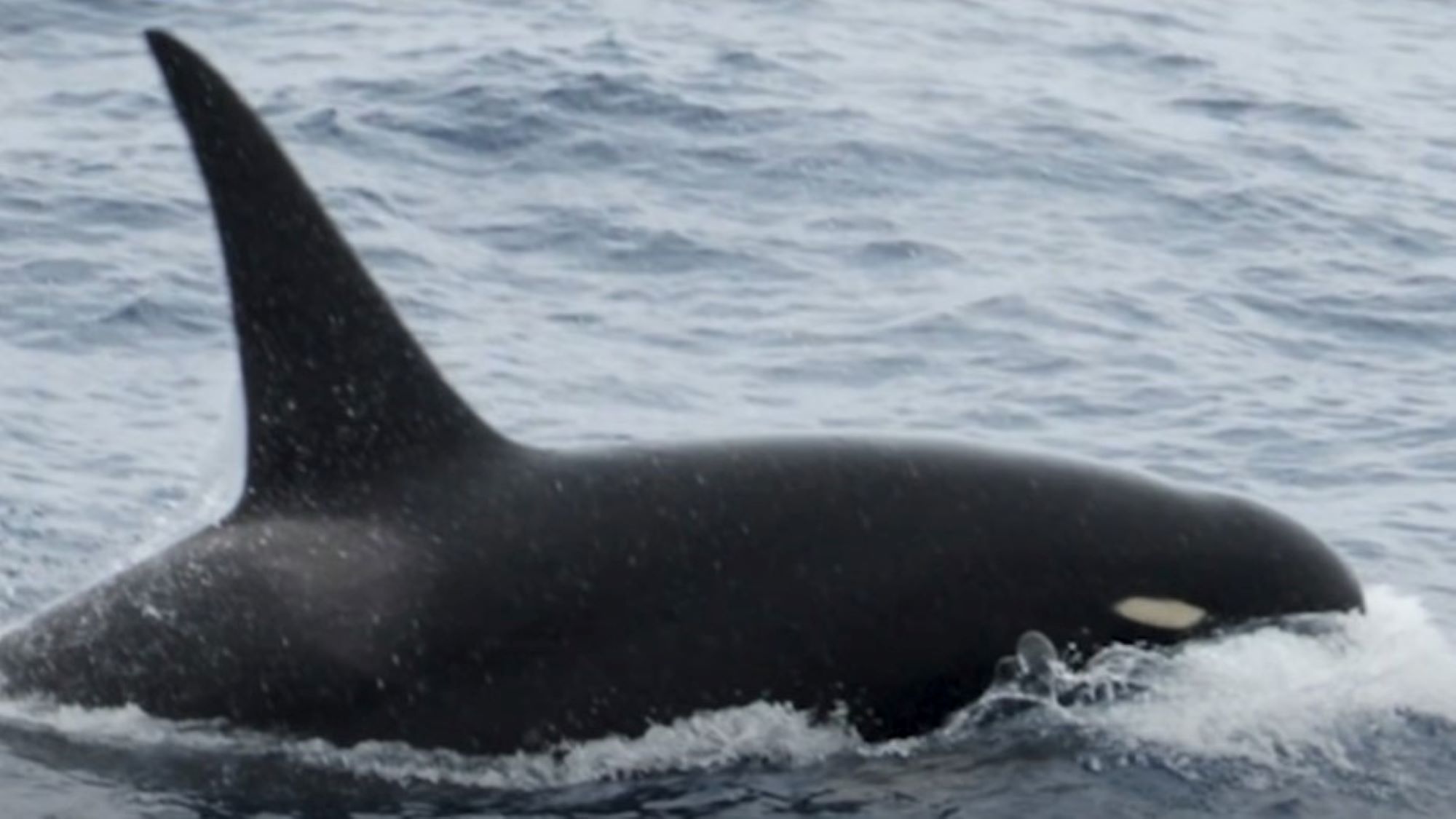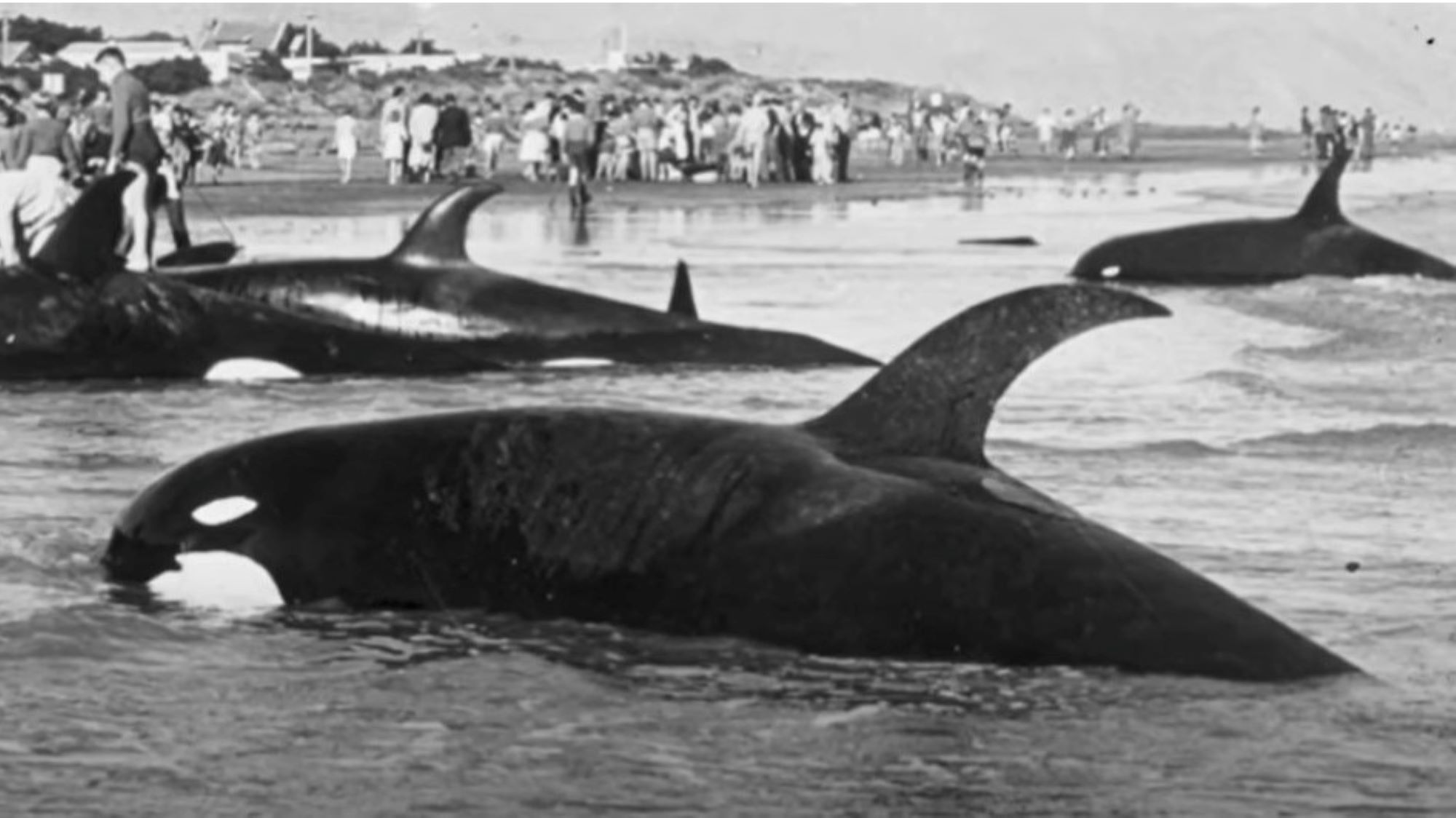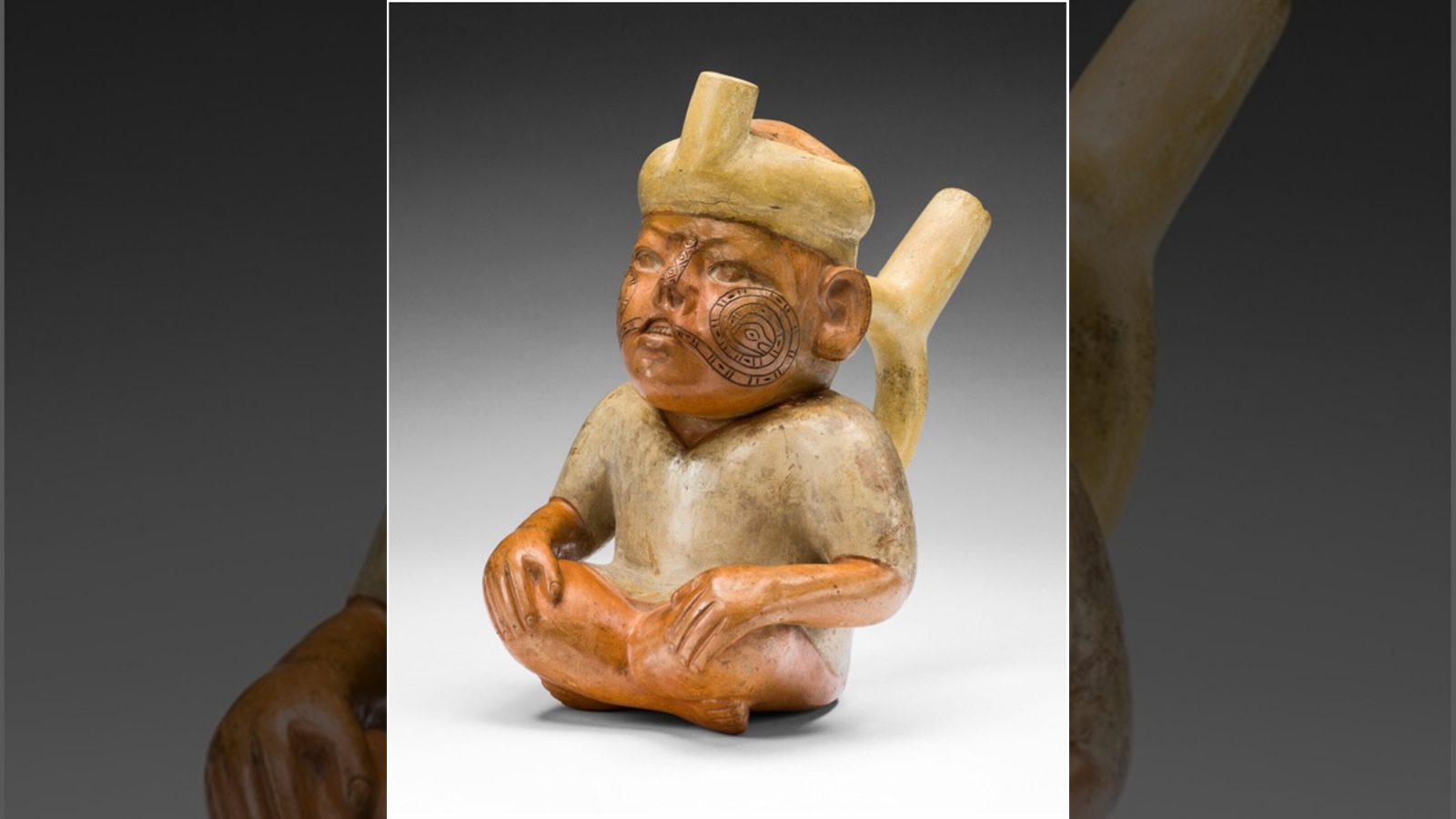Mystery orcas with bulbous heads wash up dead in unexplained mass stranding
The nine Type D orcas were found on a beach in Chile, with a necropsy of one female showing it was a healthy adult, with no signs of human involvement in its death.
A strange and rare group of orcas has stranded on a beach in Chile — the first event of its kind in 67 years and only the second ever recorded.
The orcas (Orcinus orca) belong to the "Type D" sub-group — a distinct group of orcas native to the Southern Hemisphere. Type D orcas are so different from other orcas that some scientists suggest they might actually be a completely separate species.
"I think there's a good possibility here that this Type D killer whale could be one of the largest undescribed species left on the planet," Robert Pitman, a marine ecologist at Oregon State University, told Live Science.
Orcas are divided into at least nine different sub-groups, or "types," spread all over the world. But Type D orcas — which have smaller white patches by their eyes and rounded "melon" heads — are some of the most unique.
Related: Orcas attack boat with ruthless efficiency, tearing off rudders in just 15 minutes
Scientists first came across Type D orcas in 1955 when a group of unusually shaped killer whales washed up on a beach in New Zealand. But the animals weren't identified as a distinct group of orcas until the early 2000s, when researchers spotted whales that matched the odd facial markings and body shapes of 1955 New Zealand orcas in photographs from all over the southern oceans.
The 1955 beaching was the only known stranding of Type D orcas until the two latest incidents. In November last year, researchers in Punta Arenas (at the very southern tip of Chile) were notified about a stranded female, which they identified as a Type D orca due to its distinctive small eye patch, rounded head and curved dorsal fin. The team took photos and measurements of the animal and transferred its remains to a museum.
Get the world’s most fascinating discoveries delivered straight to your inbox.
Later that month, a group of eight stranded orcas were reported about 2.5 miles (4 kilometers) away. These individuals were much more decayed, but the researchers believe they were also Type D orcas. The researchers published the results of their study on June 8 in the journal Polar Biology.
The scientists aren't sure why the nine orcas died or ended up on the beach. Whales might strand themselves for a variety of reasons, including illness or human use of underwater sonar, though the causes are not entirely understood. The team's analysis of the lone female orca showed it was a healthy adult. There were no signs of human involvement in the death, such as entanglement or a collision with a boat. The scientists didn't detect parasites in the animal, and all the abdominal organs and heart appeared healthy. The other eight, more decomposed orcas were measured, but did not have necropsies performed on them.
But Type D orca strandings are likely rare for good reason, said Pitman. Type D orcas only live between 40 and 60 degrees south, and there is very little land for them to beach on in that stretch of the ocean – the only major landmasses are New Zealand, Tasmania and the bottom tip of South America.
"I have to admit, I never thought I would hear about another stranding of Type D killer whales in my lifetime," Pitman, who reviewed the new paper before it went to print, told Live Science via email.

Other types of orcas are found as far south as Antarctica and as far north as Greenland. Some of these types' ranges overlap — but they don't appear to interbreed, or even necessarily interact with each other.
And much like the Type D orcas, scientists have speculated other groups might be different enough from each other to qualify as separate species or subspecies.
Pitman and others did some of the first genetic analysis of Type D orcas and found that the group probably has a very small population size with a high degree of inbreeding.
But unraveling the mystery of how these enigmatic marine mammals are related to other orcas will probably require more biopsies and tissue samples to learn more about Type D orca biology, Pitman said.

Ethan Freedman is a science and nature journalist based in New York City, reporting on climate, ecology, the future and the built environment. He went to Tufts University, where he majored in biology and environmental studies, and has a master's degree in science journalism from New York University.




